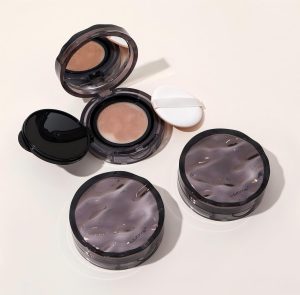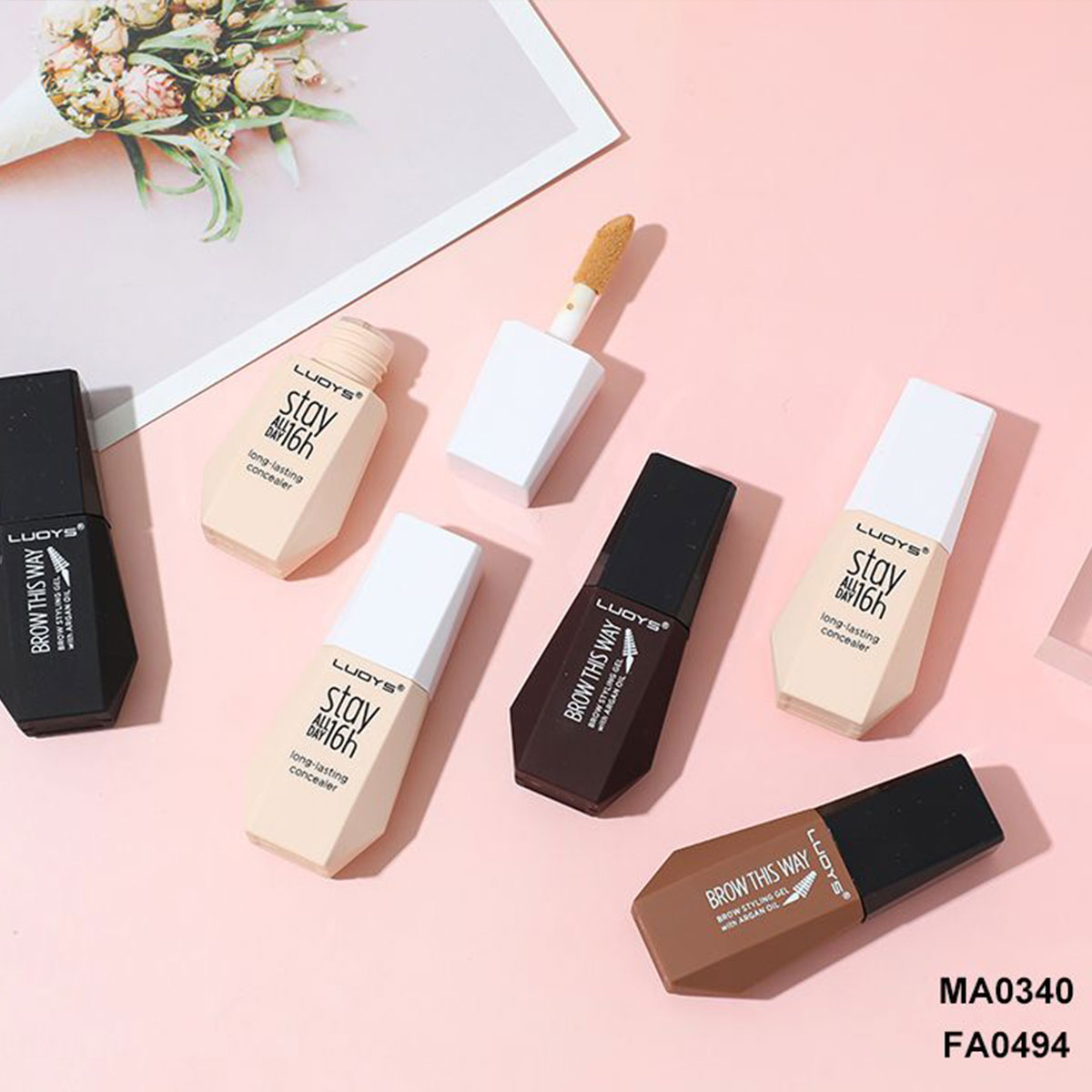The Evolution and Future of Cushion Compact Technology
The Evolution and Future of Cushion Compact Technology

In the fast-paced world of cosmetics formulation and packaging, cushion compact technology stands out. It acts as a cornerstone for modern base makeup. This approach merges convenience with strong performance. It enables precise application. And it provides results that last. Professionals in the beauty sector benefit from grasping its path. Think of formulators, brand developers, or supply chain managers. For them, this understanding yields key insights. It uncovers market needs. It also spots ways to set products apart. In the last two decades, cushion compacts have evolved sharply. They moved from a specialised idea to a worldwide essential. Material science improvements pushed this forward. So did users’ growing taste for easy-to-carry items. This piece follows their growth. It points out major steps. And it examines rising patterns. All this arms you with tools to handle this changing field.
The Origins and Early Development of Cushion Compacts
Cushion compacts first appeared in the early 2000s. They grew from Asia’s drive for light, all-in-one skincare-makeup blends. The main concept was straightforward. But it brought real change. It meant sealing liquid foundation inside a gentle, absorbent pad. This pad releases only the right amount of product. You get a light, layerable look. That setup fixed old issues with standard types. It cut down on mess. It also evened out application flaws.
At the start, creators zeroed in on the sponge holder setup. They used a water-loving polyurethane foam as the starting point. Emollients and colourants filled it. The first models stressed steadiness. The mix stayed usable. It avoided splitting. It dodged drying out. Come the mid-2000s, these units caught on in work environments. Makeup artists liked the clean, portable refill style.
This period differed in one clear way. It switched from dry powder holders to wet-filled ones. Experts saw the upsides right away. Oxidation dropped during use. The feel came closer to real skin. Tests in set conditions proved the point. Early cushions held up well for 12 hours. That beat out cream pots. Those often picked up dirt.
Milestones in the Formative Years
- Material Innovation (2005–2008): Introduction of air-permeable sponges that minimised product waste, cutting usage by 20% in lab trials.
- Formula Stability: Emulsion technologies prevented microbial growth, extending shelf life to 24 months under standard conditions.
- Packaging Refinements: Mirror-integrated lids enhanced usability, appealing to salon professionals seeking efficiency.
Such moves set the base. They showed cushion compacts could match liquid tubes for quality. Yet they went further in ease of carry.
Key Technological Advancements Shaping Modern Cushions
Cushion compact technology grew up. As it did, new steps came to the fore. They aimed to lift user satisfaction. They widened mix options too. In the 2010s, updates brought in divided sections. These had flexible output controls. Features like that let coverage build step by step. It went from fresh glow to flat matte. No extra gear was needed.
A top change was adding tiny-ground pigments. These small bits floated in silicone holders. They spread smoothly from the pad. R&D teams saw a solid boost. Blend ease rose by 15%. That fitted cushions for varied tones. On top of that, even-pH mixes appeared. They added moisture-keepers such as glycerin. These helped the skin’s shield hold during use.
Green practices joined in. Outer shells from reusable stuff showed up. Pads that break down naturally came next. They eased harm to the planet. But strength stayed the same. Looking at supply lines, this cut emission traces. It hit large runs. And it helped brands with green goals.
Comparative Overview of Generational Shifts
To illustrate progress, consider this table outlining key evolutions:
|
Generation |
Core Innovation |
Performance Gains |
Professional Impact |
|
First (2000s) |
Basic sponge reservoir |
Basic coverage; 8-hour wear |
Simplified travel kits for artists |
|
Second (2010s) |
Multi-layer emulsions |
Buildable opacity; antioxidant infusion |
Enhanced studio efficiency with refill options |
|
Third (Late 2010s) |
Adaptive dispensing valves |
Customised dosage; SPF integration |
Streamlined formulations for hybrid products |
|
Current (2020s) |
Bio-based polymers |
16+ hour longevity; hypoallergenic |
Scalable for B2B customisation |
This path highlights careful work. It targets exact building. One stage leads to the next.
Now, look closer at the workings. The pad plays a big part. Newer types have layered openness. The bottom packs tight. That holds the goods. The top stays open. That lets them out. Studies on flow backed this up. It stops too much soak. Early types often had that problem. Mix makers gain from it. They can wrap actives now. Things like niacinamide come out slow. So makeup and care start to mix.
Current Innovations: Pushing Boundaries in Formulation and Design
Right now, cushion compact technology builds on mixed roles. Take shade-fixing types. They use balancing bits in a three-colour setup. This handles base tones spot on. In a work-level case, a warm peach layer starts it. Green evens things. Lavender lifts light. Everything packs into one unit. Use brings smooth fixes.
Staying power counts most. New cushions draw on quick-dry silicones. They add skin-like films. These stand up to damp air and shifts. They give no-rub looks. Panel tests without sight showed gains. These beat old liquids. Fade hold improved by 25%.
On the making side, machines have sharpened the process. Poured pads keep things even. Sealed pulls cut empty spots. That growth fits business-to-business flows. Tailored colours and sizes hit what brands want. They do it without waste.
Bullet-point highlights of today’s standout features include:
- Skincare Synergy: Infusions of hyaluronic acid for hydration, appealing to clean beauty advocates.
- Shade Inclusivity: Expanded ranges covering 20+ undertones, driven by spectral analysis.
- Portability Enhancements: Slim profiles under 50g, ideal for professional kits.
- Hygienic Refills: Snap-in pods reduce cross-contamination risks.
These parts raise the bar. They match rules too. Safety and work hold firm.
Looking Ahead: Emerging Trends in Cushion Compact Technology
Gaze towards 2025 and later. The outlook is bright. It ties closer to tech and green ways. Look for clever wraps. Chips in units will log use through phone tools. They will prompt fresh layers. Data from surroundings feeds this. Supply pros see big wins. It allows smart stock checks. Scrap might fall 30%.
Green ways will lead. Grown pads will grow. From sea plants or fungi threads. These swap fake ones. They keep pull. And they rot quick—in months. For mixes, skin-bug friendly bits will spread. Feeders for good germs help. This meets clean needs after health scares.
Mixing speeds up. Pads will join base with drops. Or base layers. They will smooth daily steps. Time to put on might cut in half.
Issues linger. Growing green mixes without price jumps is tough. But new ways help. Dry mixes swap water for fat links. They trim power needs in making.
Predicted Shifts for 2025
- Digital Personalisation: AI-matched shades via smartphone scans.
- Eco-Packaging Mandates: 80% recycled content as industry norm.
- Functional Expansion: UV-adaptive tints that shift with light exposure.
- Global Accessibility: Affordable OEM models for emerging markets.
These signs point to growth. Cushion compacts shift from handy aids. They turn into smart skin helpers.
Spotlight on Limei: A Premier Cushion Compact Supplier

In the realm of B2B cosmetics, Limei emerges as a steadfast partner for cushion compact development. With roots in Zhejiang, China, this OEM/ODM specialist excels in high-volume production of foundation cushions, CC variants, and multi-functional concealers. Limei’s expertise spans custom formulations, from hypoallergenic bases to SPF-infused designs, all backed by rigorous stability testing.
What distinguishes Limei is its commitment to innovation within reach. Professionals appreciate the streamlined services—from prototype to pallet—ensuring timelines align with market cycles. Whether crafting a sheer daily wearer or a full-coverage compact, Limei delivers precision, quality, and scalability, empowering brands to harness cushion technology’s full potential.
Conclusion
The journey of cushion compact technology—from humble sponge reservoirs to tomorrow’s smart, sustainable hybrids—reflects the beauty industry’s knack for blending science with sensibility. For professionals, staying attuned to these shifts means crafting products that resonate deeply with users, fostering loyalty amid rising expectations. As we stand on the cusp of further breakthroughs, one truth endures: cushions will continue to redefine effortless elegance.
Frequently Asked Questions
What defines the evolution of cushion compact technology?
The evolution of cushion compact technology traces back to early 2000s innovations in sponge reservoirs and liquid emulsions, progressing through generations marked by improved stability, multi-functionality, and sustainability. Key milestones include adaptive dispensing and bio-based materials, enhancing both performance and portability for professional applications.
How do current cushion compacts incorporate skincare benefits?
Modern cushion compacts integrate humectants and antioxidants directly into the formula, allowing for hydration and protection alongside coverage. This hybrid approach ensures 12–16 hours of wear while supporting skin health, a trend professionals leverage for clean beauty lines.
What future developments should professionals anticipate in cushion compact technology?
Looking to 2025, the future of cushion compact technology points to NFC-enabled packaging for personalised usage tracking and plant-derived sponges for eco-friendliness. These advancements will prioritise digital integration and microbiome support, streamlining supply chains and formulation efficiency.
Why choose a supplier like Limei for custom cushion compacts?
Limei stands out for its OEM expertise in cushion compact technology, offering tailored solutions from prototype to production. With a focus on scalable, high-quality outputs, it supports brands navigating the evolution and future demands of this versatile format.
Can cushion compact technology adapt to diverse skin concerns?
Absolutely. Through tri-shade correctors and pH-balanced emulsions, cushion compact technology addresses undertones, sensitivity, and longevity needs. Professionals find it adaptable for inclusive ranges, ensuring broad market appeal without compromising on precision.


